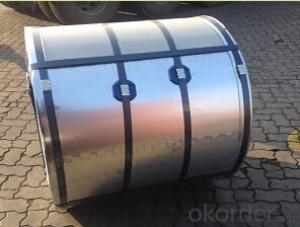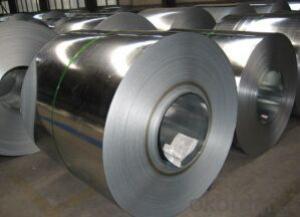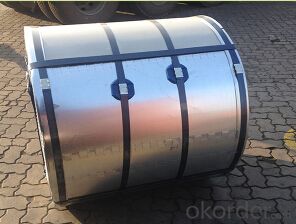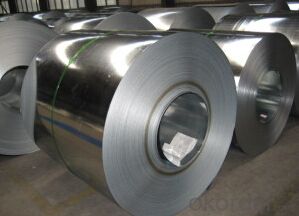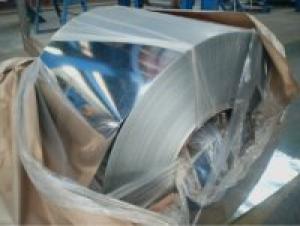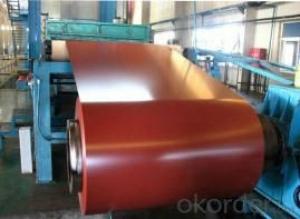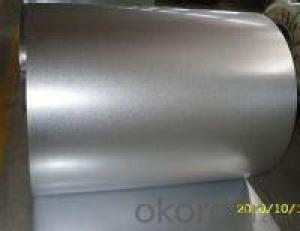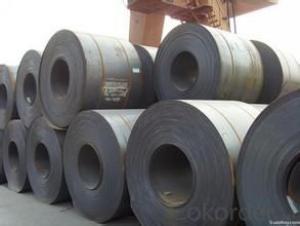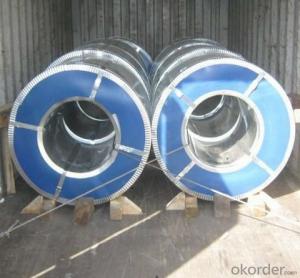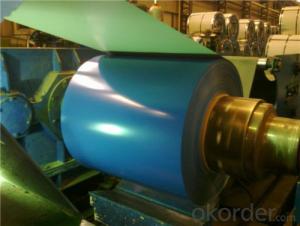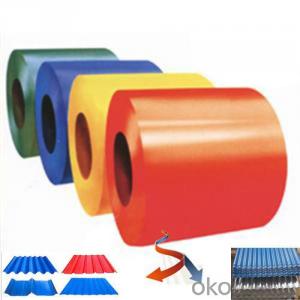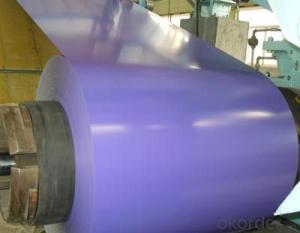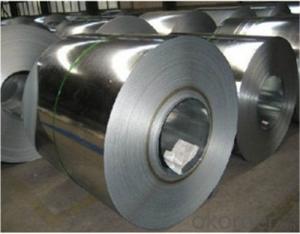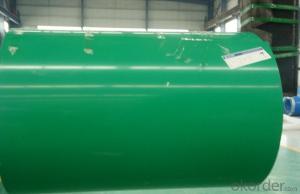Zincalum Rolled Steel Coil for Construction
- Loading Port:
- Tianjin
- Payment Terms:
- TT OR LC
- Min Order Qty:
- 25 m.t.
- Supply Capability:
- 10000 m.t./month
OKorder Service Pledge
OKorder Financial Service
You Might Also Like
Zincalum Rolled Steel Coi application:
Surface Treatment:Coated
Technique:Cold Rolled
Standard:JIS
Steel Grade:Q195
Width:914, 1000, 1200, 1219, 1220, 1250
Grade:Dx51d / Dx52d/ Dx53D/ S250,280,320gd
Base Material:Galvanized or Gavalume
Treatment:Galvanized or Prepainted
Color:Ral Standard, or Buyer′s Sample Color
Thickness:0.14mm to 1.5mm
Zinc Coating:40-150GSM
Length:up to The Thickness
Material:Steel
Lacquer:Top Side15-25 Micro,Back Side 5 Micro
Export Markets:Global
Trademark:STW
Packing:Sea Worthy Packing
Standard:0.2mm to 1.2mm
Origin:China
HS Code:72103000
Production Capacity:10000 Tons Per Month
Specifications;
1. Aluzinc coating mass: 30g-275g/sqm
2. Coil weight:4-6 tons per coil
3. Edge treatment: Mill edge or cut edge.
4. Technical treatment: Bright annealed, flatting, cold harden.
5. Surface treatment: Annealed, bright finish, dull/bright finish, slit edge.
6. Spangle: Normal/small/big/zero spangle.
7. Delivery terms: FOB / C&R / CIF
8. Supply Ability: 30000MT/month
9. Application: The construction industry: The roof structure, keel, grill, Clapboard, ceilings, fire shutter doors, etc; The light industry, the Automobile, agriculture, animal husbandry, fishery, casing of household Electronic application, civilian smoke stack, etc.
10. Delivery time: Within 30 days after the receipt of L/C or Signed the contract or according to customer's requirement.
Special design available according to requirement; Anti-corrosion And high-temperature resistant with black painting; All the production process Are made under the ISO9001: 2000 strictly
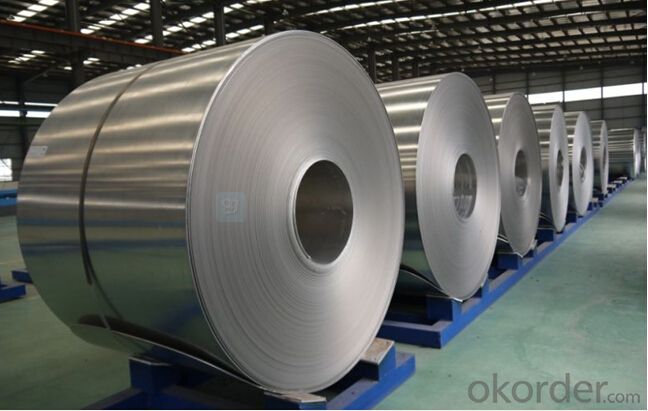
| Zinc Coating | 60-275g( as required) |
| Thickness Range | 0.14-1.5mm |
| Coil Inner Diameter | 508mm |
| Coil weight | 3-5MT(as required) |
| Surface | Regular/mini/zero spangle, chromated, skin pass, dry etc. |
| Width range | 600-1250mm(900mm, 1215mm, 1250mm, 1000mm the most common) |
| Applications | With excellent cold bending molded manufacturablity, good decoration effect, strong anti-corrosion ability, galvanized steel coils and sheets are also pollution-free and easily recycled. Accordingly, they can be used as final products and basic plates of color coated steel coils and widely applied in construction, home appliances, decoration, ect |
FAQ
1.What's your MOQ?
25MT, it is for one container.
2.Do you have QC teams?
Yeah, sure, our QC team is very important, they will keep the quality control for our products.
3. What's your normal delivery time?
Our delivery time about 10-20days for standard sizes, if you have other requirements like hardness and width ,it is about 20-40days. But don't worry ,we also try our best for the delivery time ,because time longer and our cost is higher.
4.Are the products tested before shipping?
Yes, all of our PPGI and GI was qualified before shipping. We test every batch every day.
- Q: I've heard on some 1911 forums that the slides of Armscor guns are now extruded. What is extruded steel? How is it made? Are they strong (4140carbon steel was used in the process).
- Extrusion okorder /
- Q: I want to get a new knife but i cant decide if i wan a spyderco pacific salt or a cold steel ak47
- Hibben are even better in my opinion, but cold steel are reputable and do good quality high carbon steel knives and swords. Paul Chen does some knives and they are the best I've seen but a lot more expensive
- Q: How long can steel coils be stored before they need to be used?
- The storage duration for steel coils can vary depending on various factors such as the type of steel, environmental conditions, and proper storage techniques. However, generally, steel coils can be stored for an extended period, ranging from several months to a few years, as long as they are stored in a controlled environment to prevent corrosion and damage.
- Q: What are the common challenges in steel coil manufacturing?
- Some common challenges in steel coil manufacturing include maintaining consistent quality, managing the weight and size of coils, ensuring proper surface finish, minimizing defects such as dents or scratches, preventing coil damage during handling or transportation, and optimizing production efficiency to meet customer demands.
- Q: How are steel coils inspected for defects after rewinding?
- Steel coils are inspected for defects after rewinding through a thorough visual examination and various non-destructive testing techniques such as ultrasonic testing, magnetic particle inspection, and eddy current testing. These methods help identify any surface defects, internal flaws, or deviations in dimensions, ensuring the quality and integrity of the steel coils.
- Q: What are the surface treatments for steel coils?
- Steel coils have multiple options for surface treatments, each with a particular purpose and unique advantages. Some popular surface treatments for steel coils are: 1. Hot-dip galvanization: This technique involves submerging the steel coil in molten zinc, resulting in a protective layer of zinc coating on the surface. Galvanization provides outstanding corrosion resistance, making the steel coil suitable for outdoor use in harsh environments. 2. Electro-galvanization: By using an electrolytic process, a thin layer of zinc is deposited onto the steel coil's surface. Electro-galvanization offers good corrosion resistance, although the coating is generally thinner compared to hot-dip galvanization. 3. Pre-painting or pre-coating: Prior to being formed into final products, steel coils can be coated with paints or other coatings. This surface treatment enhances the coil's visual appeal while providing protection against corrosion, weathering, and other environmental factors. 4. Pickling and oiling: This treatment involves immersing the steel coil in an acid solution to remove oxides and scale from the surface. After pickling, the coil is typically coated with oil to prevent rust formation during storage and transportation. 5. Phosphating: Phosphating is a chemical conversion coating process that forms a phosphate layer on the steel coil's surface. This treatment improves the adhesion of subsequent coatings, such as paints or primers, while also offering some corrosion resistance. 6. Organic coatings: Steel coils can be coated with various organic materials, including epoxy, polyester, or polyurethane, to enhance their corrosion resistance and aesthetic appearance. These coatings provide a wide range of colors, textures, and finishes, making them suitable for diverse applications. It is important to consider the intended application, environmental conditions, and desired appearance when choosing a surface treatment for steel coils. Manufacturers and end-users must carefully evaluate these factors to select the most suitable surface treatment for their specific requirements.
- Q: what are the characteristics when of iron or steel when stretched? which one could be stretched further? which one stretches more evenly?thankyou
- Steel is harder and more brittle than iron since it has impurities which disrupt the regular layers of atoms. This means that the iron will stretch further and more easily. This also means it will stretch more easily.
- Q: I read that contrary to popular belief, today's folded steel swords are only made that way for tradition and cosmetics. In the past steel was very impure and therefore had to be folded in order to make a good sword. Today's steel manufacturing provides very pure steel and so folding the metal only makes it look nicer, but does nothing to improve the function of the blade.What do you think of this?
- Folding Sword
- Q: Which is used for what?Differences as far as style etc.???Better in your opinion and why??I'm just beginning to look at guitars i might be able to get at christmas if i'm still committed..i've been looking online.,,,,NYLON or STEEL STRINGED ACOUSTIC GUITAR????Thanks.
- Well first off, a nylon, or classical guitar, has nylon strings and a steel, or acoustic guitar, has steel strings (duh lol). A classical is used primarily for classical music. Its body is also a bit differently built then an acoustic. The classical technique primarily uses fingering, not pick strumming, since nylon is a weaker material and can break relatively easily with a pick. Now an acoustic is is a bit different. The body is built a bit more sturdier than a classical so it can take the larger tension of the strings. Acoustic guitars are used in a wide range of music genres, ranging from Country to Rap. So if your not into classical music, an acoustic is your best bet. Remember, NEVER try putting steel strings on a classical guitar, since the tension of the steel strings can break the guitar (i've seen it happen lol).
- Q: How do steel coils contribute to sustainability in manufacturing?
- There are several ways in which steel coils contribute to sustainability in manufacturing: 1. Recycling plays a crucial role: Steel is one of the world's most recycled materials, boasting a recycling rate above 90%. Steel coils are made from recycled steel and can be recycled again at the end of their lifespan. This reduces the reliance on raw materials extraction, conserves natural resources, and decreases energy consumption and greenhouse gas emissions associated with steel production. 2. Durability is a key factor: Steel is renowned for its strength and durability. Steel coils are specifically designed to withstand heavy loads, extreme temperatures, and harsh environmental conditions. Consequently, products made from steel coils, such as automotive parts, construction materials, and appliances, have a longer lifespan. This diminishes the need for frequent replacements and minimizes waste. 3. Energy efficiency is improved: Steel coils are utilized in various manufacturing processes, including stamping, forming, and welding. These processes require less energy when working with steel coils compared to other materials. Steel's high strength-to-weight ratio allows for the production of lightweight yet strong components, reducing energy consumption during transportation and enhancing fuel efficiency in vehicles. 4. Emissions are reduced: Steel coils contribute to sustainability by assisting manufacturers in lowering their emissions. Steel is a low-carbon material, emitting fewer greenhouse gases compared to materials such as aluminum or plastics. By employing steel coils, manufacturers can reduce their carbon footprint and contribute to climate change mitigation efforts. 5. The circular economy is promoted: Steel coils play a crucial role in the circular economy, which aims to minimize waste and maximize resource efficiency. Steel coils can be easily recycled and reused, ensuring their continued presence in the production cycle. This diminishes the need for virgin materials and encourages a more sustainable and circular approach to manufacturing. To conclude, steel coils make significant contributions to sustainability in manufacturing by being recyclable, durable, energy-efficient, emission-reducing, and promoting a circular economy. By selecting steel as a material and utilizing steel coils, manufacturers can take significant steps towards reducing their environmental impact and fostering a more sustainable manufacturing industry.
Send your message to us
Zincalum Rolled Steel Coil for Construction
- Loading Port:
- Tianjin
- Payment Terms:
- TT OR LC
- Min Order Qty:
- 25 m.t.
- Supply Capability:
- 10000 m.t./month
OKorder Service Pledge
OKorder Financial Service
Similar products
Hot products
Hot Searches
Related keywords
